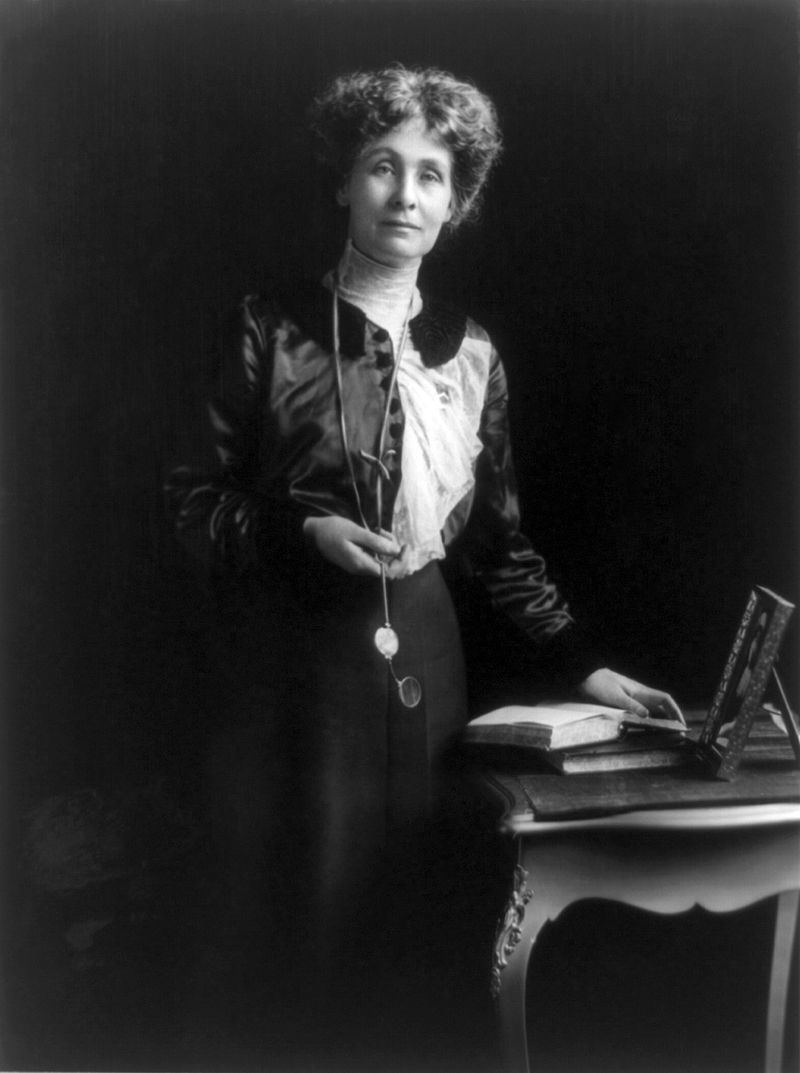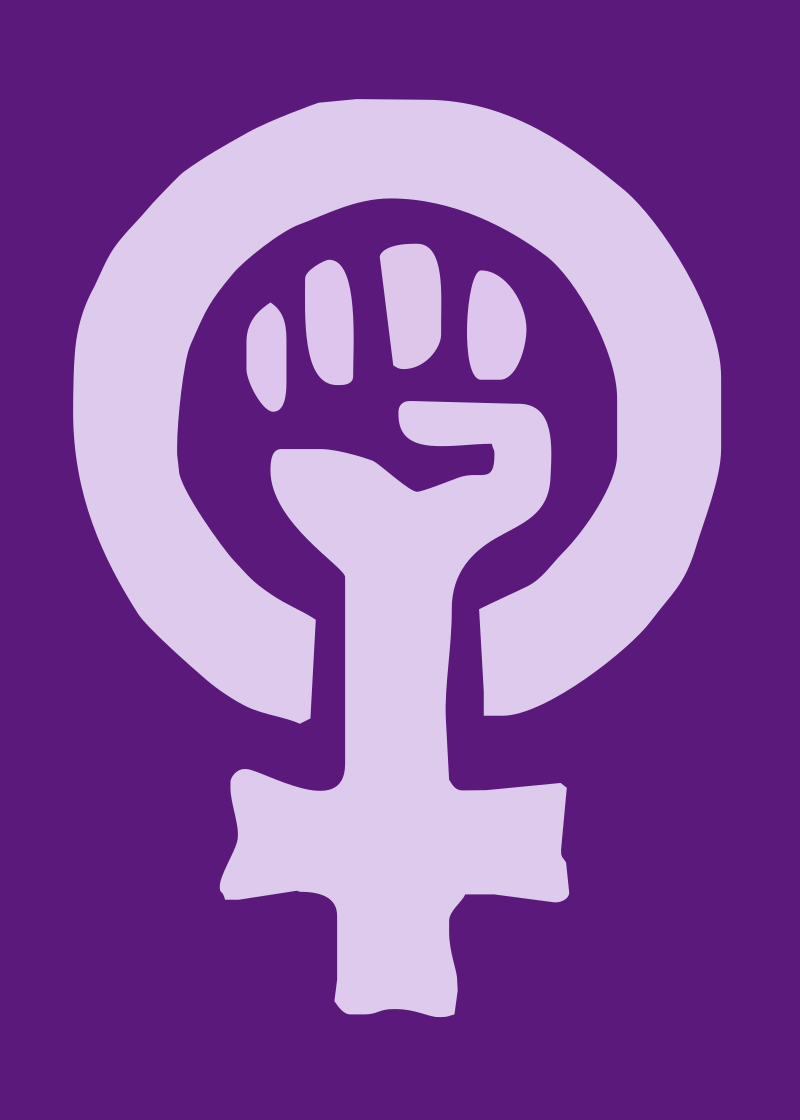¿QUÉ ES EL FEMINISMO?
El feminismo es un conjunto heterogéneo de movimientos políticos, culturales, económicos y sociales que tienen como objetivo la reivindicación de los derechos femeninos, así como cuestionar la dominación y la violencia de los varones sobre las mujeres y la asignación de roles sociales según el género.
Gracias al feminismo, se han conseguido logros de trascendental importancia como el voto femenino, la igualdad ante la ley o los derechos reproductivos, entre muchos otros.
PRIMERA OLA DEL FEMINISMO
Primera ola del feminismo se refiere al movimiento feminista que se desarrolló en Inglaterra, Estados Unidos y otras partes del mundo como América Latina a lo largo del siglo XIX y principios del siglo XX.
Originariamente, se concentró en la obtención de igualdad frente al varón en términos de derecho de propiedad e igual capacidad de obrar, así como la demanda de igualdad de derechos dentro del matrimonio. A finales del siglo XIX, los esfuerzos se van a concentrar en la obtención de derechos políticos, en concreto el derecho al sufragio.
Gracias al feminismo, se han conseguido logros de trascendental importancia como el voto femenino, la igualdad ante la ley o los derechos reproductivos, entre muchos otros.
PRIMERA OLA DEL FEMINISMO
Primera ola del feminismo se refiere al movimiento feminista que se desarrolló en Inglaterra, Estados Unidos y otras partes del mundo como América Latina a lo largo del siglo XIX y principios del siglo XX.
Originariamente, se concentró en la obtención de igualdad frente al varón en términos de derecho de propiedad e igual capacidad de obrar, así como la demanda de igualdad de derechos dentro del matrimonio. A finales del siglo XIX, los esfuerzos se van a concentrar en la obtención de derechos políticos, en concreto el derecho al sufragio.
 Un hito del feminismo es la Convención de Seneca Falls en Nueva York en el año 1848, donde 300 activistas y espectadores se reunieron en la primera convención por los derechos de la mujer en Estados Unidos, cuya declaración final fue firmada por unas 100 mujeres.
Un hito del feminismo es la Convención de Seneca Falls en Nueva York en el año 1848, donde 300 activistas y espectadores se reunieron en la primera convención por los derechos de la mujer en Estados Unidos, cuya declaración final fue firmada por unas 100 mujeres.En Inglaterra, aparecen la suffragettes, activistas por los derechos civiles, lideradas por Emmeline Pankhurst así como numerosas autoras y activistas, en su mayor parte de Estados Unidos e Inglaterra, que van a llevar el feminismo al terreno del activismo, especialmente en un contexto de reivindicación de igualdad de derechos frente al estado.
SEGUNDA OLA DEL FEMINISMO
La Segunda Ola Feminista, del Movimiento de la Mujer o de liberación de la mujer hace referencia un período de actividad feminista que comienza a principios de los años 1960 y dura hasta los años 90 del siglo XX.
Así como la primera ola del feminismo se enfocaba principalmente en la superación de los obstáculos legales a la igualdad legal (sufragio femenino, derechos de propiedad, etc), la segunda ola tenía una amplia variedad de temas: la desigualdad no-oficial, la sexualidad, la familia, el lugar de trabajo y quizá de forma más controvertida, los derechos en la reproducción.
Simone de Beauvoir, con su libro El segundo sexo, Betty Friedan con La mística femenina, Kate Millett con Sexual Politics
TERCERA OLA
Otro hito en la historia de la tercera ola son los debates llamados "Guerras feministas por el sexo", considerados a veces como el inicio de la tercera ola, constituyeron una serie de encendidos debates en torno a las posturas ante el sexo, la prostitución, el sadomasoquismo y la transexualidad que enfrentaron al movimiento feminista con la comunidad feminista lésbica.
ACTUALIDAD
¿Ha desaparecido el movimiento feminista?
Quizás conviene comenzar por recordar que un movimiento social no es un partido político o una organización que mantiene su existencia independientemente del grado de participación, movilización o acceso a los medios de comunicación..
Si comparamos las distintas oleadas feministas lo que tienen en común sus demandas es que se basan en la constatación de que el sexo biológico se convierte en género social. Es decir, el hecho de ser mujer no es sólo un fenómeno biológico; sobre la biología se le construye un rol social y unos ámbitos de participación que constituyen su género. A este género se le asigna un estatus inferior que se traduce luego en la discriminación. Las sociedades y su organización social, económica y cultural ha cambiado históricamente. Sin embargo, en cada caso se ha mantenido esta jerarquía entre los géneros y esta discriminación. Por eso el feminismo reaparece a través del tiempo.
Si comparamos las distintas oleadas feministas lo que tienen en común sus demandas es que se basan en la constatación de que el sexo biológico se convierte en género social. Es decir, el hecho de ser mujer no es sólo un fenómeno biológico; sobre la biología se le construye un rol social y unos ámbitos de participación que constituyen su género. A este género se le asigna un estatus inferior que se traduce luego en la discriminación. Las sociedades y su organización social, económica y cultural ha cambiado históricamente. Sin embargo, en cada caso se ha mantenido esta jerarquía entre los géneros y esta discriminación. Por eso el feminismo reaparece a través del tiempo.
Como la expresión en cada período histórico es diferente, las mujeres se han encontrado con discriminaciones de diferente tipo y en cada uno de los períodos de "resurrección" del feminismo se plantean reivindicaciones específicas.


--------------------------------------------------------------------------------------------------------------------
WHAT IS FEMINISM?
Feminism is a diverse set of political, cultural, economic and social movements that aim to claim women's rights and challenge the domination and violence of men on women and the allocation of social roles according to gender.
Thanks to feminism, it have been achieved accomplishments of paramount importance as women's suffrage, equality before the law or reproductive rights, among many others.
FIRST WAVE OF FEMINISM
First-wave feminism refers to the feminist movement that developed in England, the United States and other parts of the world like Latin America throughout the nineteenth century and early twentieth century.
Originally, it concentrated on obtaining equality in relation to men in terms of property rights and equal capacity to act and demand equal rights within marriage. In the late nineteenth century, efforts will be concentrated on obtaining political rights, particularly the right to vote.
A milestone of feminism is the Seneca Falls Convention in New York in 1848, where 300 activists and spectators gathered at the first convention for the rights of women in the United States, whose final declaration was signed by about 100 women.
In England, the suffragettes, activists for civil rights, led by Emmeline Pankhurst and numerous authors and activists, mostly from the United States and England, which will bring feminism to the realm of activism appear, especially in a context of equal rights claim against the state.
SECOND WAVE OF FEMINISM
Second Wave Feminist Women's Movement or women's liberation refers a period of feminist activity beginning in the early 1960s and lasting until the 90s of the twentieth century.
As the first wave of feminism focused mainly on overcoming legal obstacles to legal equality (women's suffrage, property rights, etc.), the second wave had a wide variety of topics: unofficial inequality, sexuality , the family, the workplace and perhaps most controversially, reproductive rights.
THIRD WAVE
Third Wave Feminism is a term identified with various branches of feminism whose activism and research begins in 1990 and extends to the present. The movement emerged as a response to perceived failures in the call Feminism second wave: the awareness that there is no single model of women, on the contrary, there are many models of women, determined by social, ethnic, nationality, social class, sexual orientation or religion.
Another milestone in the history of the third wave are the debates called "feminist sex wars", sometimes regarded as the beginning of the third wave, they formed a series of heated debates about the attitudes to sex, prostitution, sadomasochism and transsexualism faced the feminist movement with the lesbian feminist community.
PRESENT
Feminist movement has disappeared?
Maybe you should start by emphasize that a social movement is not a political party or organization that maintains its existence regardless of the degree of participation, mobilization or access to the media ..
If we compare the various feminist waves what they have in common is that their claims are based on the realization that the biological sex becomes social gender. That is, the fact of being a woman is not only a biological phenomenon; on the biology it is building a social role and some areas of participation that constitute its kind. To this kind is assigned a lower status that is then translated into the discrimination. Societies and their social, economic and cultural organization has changed historically. However, in each case it has maintained this hierarchy between genders and this discrimination. So feminism reappears over time.
As the expression in each historical period is different, women have encountered discrimination of different types and in each of the periods of "resurrection" of feminism specific claims arise.

No hay comentarios:
Publicar un comentario